Results 1 to 10 of 17
Hybrid View
-
02-18-2015, 07:31 AM #1
 Help! Identifying Turkish Natural Stone
Help! Identifying Turkish Natural Stone
Hello everyone, I live in Turkey and my friend gave me this natural stone yesterday but I haven't used it nor lapped it. This stone was mined northern-east region near the Georgia and the Black Sea. A sixty-five years old man mines this stone from his village area. He confirmed that this type of stone used to be used as a razor hone or other tools. My friend tried to hone his razor and said it is not finer than his coticule and shave was like a coticule. Making slurry with this stone is not easy. By the way stone is drying very fast. Like my Chinese 12k(PHIG). Surface of the stone is very very smooth glass like(by feel). Couple of experienced friends claim that this stone somehow alike Thuringian stones. Any thoughts?
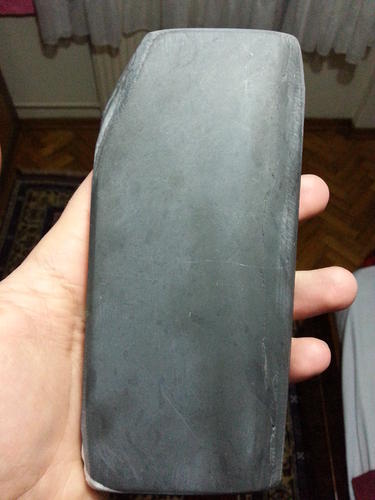
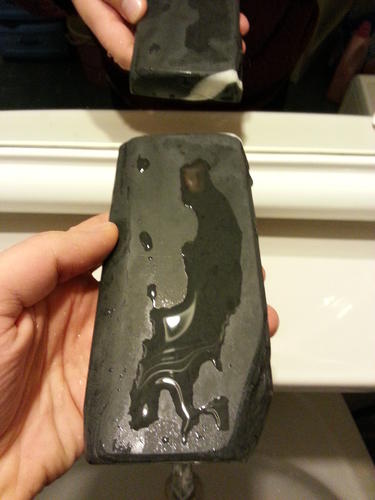
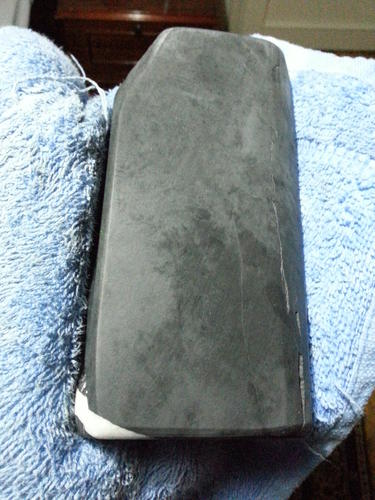
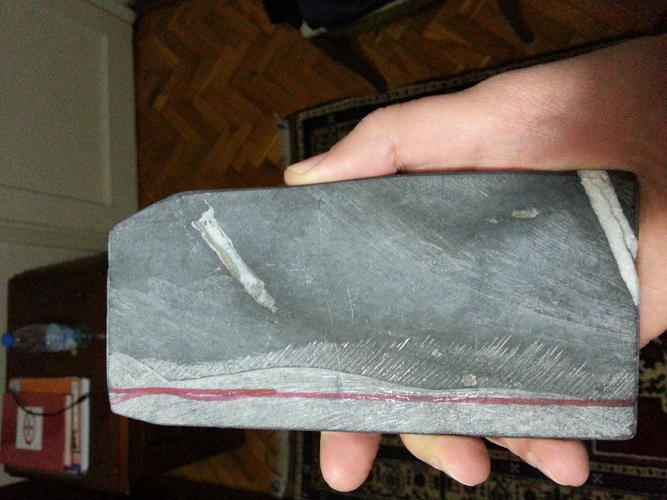
-
02-18-2015, 06:19 PM #2

It looks nice. Aside from that, nobody can tell only by pictures if the stone is a finisher or not.
-
02-18-2015, 06:46 PM #3Senior Member

- Join Date
- Sep 2013
- Location
- NW Indiana
- Posts
- 1,060
Thanked: 246
No one else here likely has one of those, so we can't easily tell you if it's like a Thuringian. It is already quite significantly different in one way - most Thuris are fairly soft and easy to slurry, and you say that stone is very hard.
-
02-18-2015, 07:09 PM #4

It could be a turkish oil stone? Those were fron Turkey right?
BTW pming you. You got my HAD itching.
-
02-18-2015, 07:18 PM #5

Not every stone that comes from Turkey is a Turkey oilstone. It can be called Turkey hone, and, if used with oil, then "Turkey" or "Turkish" oilstone, but it's a different stone from the Turkey oilstone™. Also, probably, the actual Turkey oilstone did not originate from Turkey.
Last edited by Vasilis; 02-18-2015 at 07:22 PM.
-
02-18-2015, 07:36 PM #6
-
The Following User Says Thank You to Badgister For This Useful Post:
Chinaski (02-20-2015)
-
02-19-2015, 02:15 AM #7

If you have ever seen a turkish oilstone they are a dark color. Similar to the stone OP posted. I haven't seen one with red figuring though.
I wasn't trying to be redundant. I don't know how fine they are but I know they're hard. And I don't think they would be called Turkey or Turkish unless they had something in common back in the day.Last edited by DireStraights; 02-19-2015 at 02:17 AM.
-
The Following User Says Thank You to DireStraights For This Useful Post:
Chinaski (02-20-2015)
-
02-19-2015, 08:56 PM #8
 Help! Identifying Turkish Natural Stone
Help! Identifying Turkish Natural Stone
Its might be a Turkish Hone but not in the Term of a Turkey Oil Stone, however this one looks interesting and iam getting interested in it ;-)
Thats one of my Turkey Oil Stones:
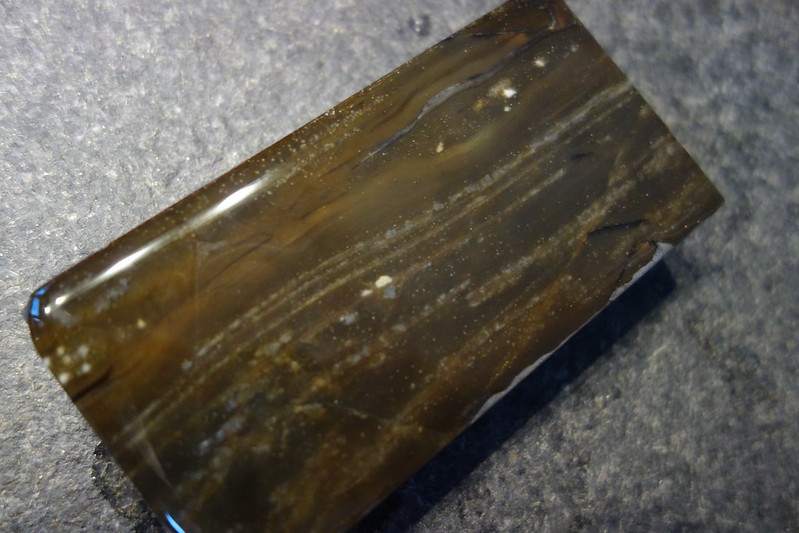
Last edited by doorsch; 02-20-2015 at 08:30 PM.
███▓▒░░.RAZORLOVESTONES.░░▒▓███
-
The Following User Says Thank You to doorsch For This Useful Post:
Chinaski (02-20-2015)
-
02-20-2015, 06:21 AM #9

Mine is definitely not a Turkish oil or Crete stone. Because the region where mine is mined is opposite far end of the country. And it is different by look. But I will test the stone with wd-40 and thin machine oil. I hope I can get better examples on May or June.
-
02-20-2015, 03:47 PM #10Senior Member


- Join Date
- Jul 2011
- Posts
- 2,110
Thanked: 459
There are a lot of different slate stones like that, it's hard to tell how good it is until you get a razor on it, perhaps get some pics of an edge against pictures of an edge from a known stone, etc. Even in the US there is a lot of slate and chert that is not novaculite but that will finish a razor. For various reasons (jasper comes to mind), it's either extremely hard and oddly shaped because it's not cut into a stone for honing because there are other users (jewelers) or there just aren't big enough pieces, etc.
There are also a lot of stones capable of finishing a razor that just don't do it that well. If the shave is like a coticule, then for a slate that's problematic, I'd say. It depends on the coticule, too, but it may be that the particle size in that stone is a bit large. Who knows?


 7Likes
7Likes LinkBack URL
LinkBack URL About LinkBacks
About LinkBacks






 Reply With Quote
Reply With Quote

